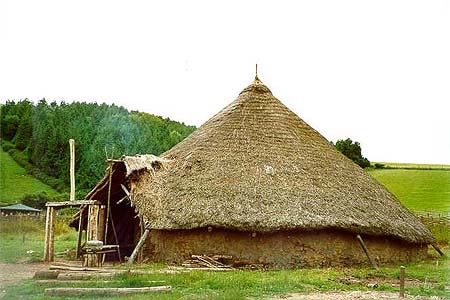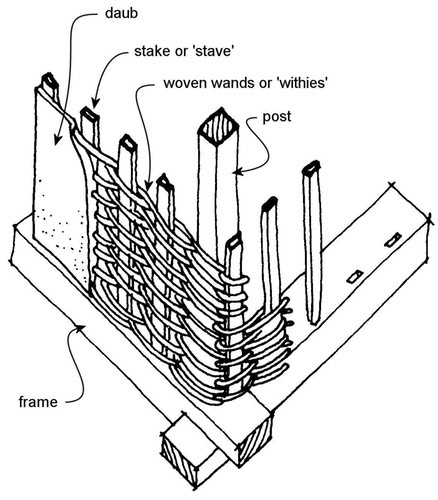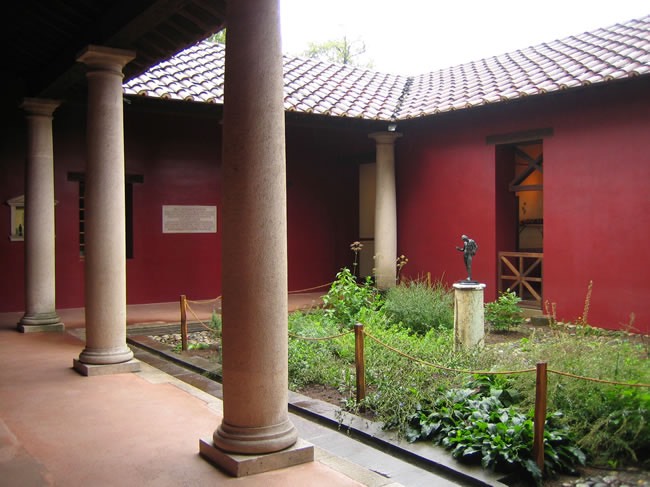by Peter S. Wells
Were the Dark Ages dark? That depends on the precise meaning you use for “dark”. If you mean “unilluminated”, then there’s no question: the Dark Ages were dark, dark, dark. There isn’t much written history coming down to us from that period. We have lots of written sources for the late Roman Empire, but the period from roughly 400 CE to 800 CE has little in the way of documentation. What documentation we do have reeks of woe and recrimination. “Why are things so bad?” the authors lament; “It must be because we have been so sinful.”
If, on the other hand, you take “dark” to mean “bad” or “unhappy”, then Peter S. Wells will disagree. His basic argument is that the archaeological finds of the last few decades show a vibrant, artistically energetic culture in Western Europe. He cites a wide array of evidence to demonstrate that things weren’t anywhere near as bad as many people think. He claims that all the moaning and groaning in the written sources is just sour grapes from lovers of classical Roman civilization, old fogies who just couldn’t get with the new program.
For example, Mr. Wells describes the archaeological findings at Regensburg, Mainz, and Cologne, observing that there is no evidence of destruction from the Dark Ages. This seems a straw man argument: I certainly don’t believe that the decline in the Dark Ages was attributable to rampaging barbarians burning everything down. Rather, I expect that the decline was due to the disruption of the underlying processes of Roman civilization. Roman law, for example, was supplanted by more primitive Germanic legal traditions — and those traditions did a lousy job of keeping commerce moving and protecting property rights. Without the legal infrastructure of a large urban civilization, Western Europe slowly lost the economic benefits of such an infrastructure, and wealth declined. Mr. Wells argues that there is no evidence of population decline, but he admits to the decline of maintenance of buildings, roads, and aqueducts. This strikes me as grossly illogical: why would the people stop maintaining the infrastructure unless there weren’t as many people needing the infrastructure?
Mr. Wells devotes an entire chapter to the history of London during this period, citing extensive archaeological evidence. He notes three major changes in London during the Dark Ages: 1) many of the great stone buildings were dismantled; 2) the stones from these buildings were sometimes re-used elsewhere; and 3) a thick layer of “dark earth” covered the earlier Roman structures. Crucial to his argument is the observation that dark earth does not reflect abandonment of the area, but instead indicates a transition from stone structures to wattle-and-daub houses. As these houses wore out, they were readily replaced, but the discarded wood and clay transformed into dark earth. Mr. Wells writes, “[these three changes] do not reflect abandonment of the site, or even decline in population and economic activity; rather these attest to changes in the character of settlement structures and function.”
Finally, Mr. Wells cites abundant evidence of sophisticated jewelry and metalwork as indicators of continuing economic health in Western Europe.
I disagree with Mr. Well’s claims that the Dark Ages reflect a transition, not a decline. Yes, there was certainly change, but the two critical questions, to my thinking, are 1) did overall population decline; and 2) did total economic output of the region decline? The answers to these two questions, I think, resolve the question as to whether the Dark Ages were dark in the sense of “unhappy”.
The evidence for population decline is abundant. For example, Mr. Wells points out that the stone construction used in Roman London was replaced by wattle-and-daub construction. Now, wattle-and-daub construction is ancient and rather primitive:

The basic structure of wattle and daub is simple: you set up vertical timbers and then tightly weave pliant sticks of wood through them; then you daub mud onto the wattle.

It should be obvious that dried mud is not very sturdy, that structures like this required constant maintenance, and that the wattle sticks would rot and lose their strength in a decade or two. Moreover, the roofing on these consisted of bundled straw; while this was fairly good at keeping out the rain, it must surely have shed bits of straw into the home on a regular basis. And have you ever smelled moldy straw?
Here’s what the interior of a classic Roman house looked like:

Note the use of tiles for roofing rather than straw; the open doorways. Roman houses had interior walls, while traditional wattle and daub structures had no interior walls. (It is true that much more elaborate wattle and daub structures were built until quite recently, some of them several stories high, but I very much doubt that the housing in Dark Age London was similar to these modern designs.)
Who on earth would prefer to live in a wattle and daub house instead of a traditional Roman house? I refuse to accept Mr. Well’s claim that Londoners decided that wattle and daub houses were more comfortable than the traditional Roman designs. They didn’t shift from the Roman design to wattle and daub out of preference: they did so because they weren’t rich enough to afford them.
Similarly, I do not accept Mr. Well’s suggestion that Western Europeans tore down the grand stone buildings of Roman times in order to use them for superior structures. If they had done so, where have all those superior structures gone? We have plenty of old Roman structures still extant, but no comparable Dark Age structures. Western Europeans did not destroy Roman buildings to use the stones for better projects; they did so to use the stones in more primitive structures that were later dismantled for better use.
The record is full of examples of population decline. For example, we know that there was a mass migration of Roman Britons from western England to Brittany (why do you think it’s called “Brittany”?) This took place in the Dark Ages during the Anglo-Saxon invasion of England, with the Germanic people steadily pushing the native Britons westward. The records clearly show that the Britons were able to settle in Brittany because the area was already depopulated. Of course, one might argue that all this merely shows a transfer of populations rather than an absolute decline: Anglo-Saxons leaving their overpopulated homelands to England, Britons escaping to underpopulated Brittany. This hypothesis has some merit, but there’s plenty of evidence that the Germanic invaders were seeking agricultural wealth, not living space.
Moreover, we have plenty of evidence of a decline in trade all over Western Europe. We see less evidence of trade in mundane goods and greater concentration on high-value items – a strong indication that the overhead costs of trade increased during the Dark Ages. Certainly the great Roman roads that had supported trade decayed during the Dark Ages.
Another indicator of decline is the size of armies. For example, the Romans invaded Britain in 43 CE with 20,000 legionnaires and a like number of auxilliaries; the native Celts were apparently numerous enough to offer serious resistance to this force. But in the Dark Ages, the Anglo-Saxons were able to invade and conquer England with only a few thousand men. In 312 CE, at the Battle of the Milvian Bridge, both sides fielded about 100,000 soldiers. Just 140 years later, at the Battle of Chalons in 451 CE (where Attila the Hun was turned back), the two sides could only muster about 30,000 men each. The largest battles fought in Britain during the Dark Ages are thought to have involved only about 5,000 men on each side. Obviously, Dark Age populations were much lower than they were during the Roman Empire.
For all these reasons, I reject the hypothesis that Mr. Wells argues in this book. That hypothesis enjoys some support from other historians, and the question is considered to be controversial, but I believe that it is safe to say that Western European populations and economic output declined during the period 400 CE to 800 CE.
